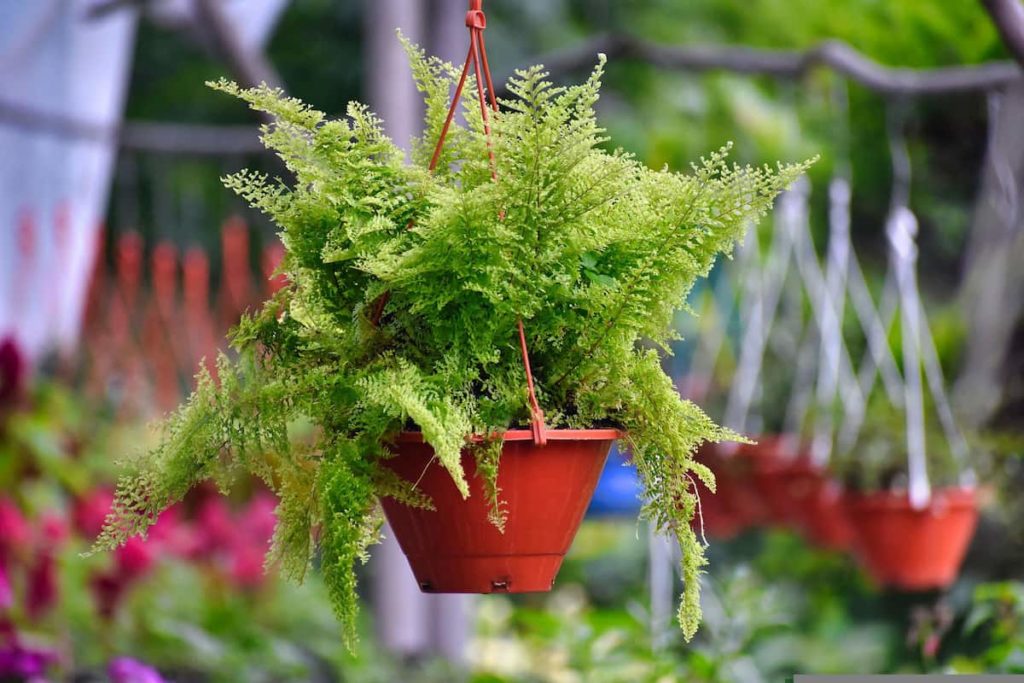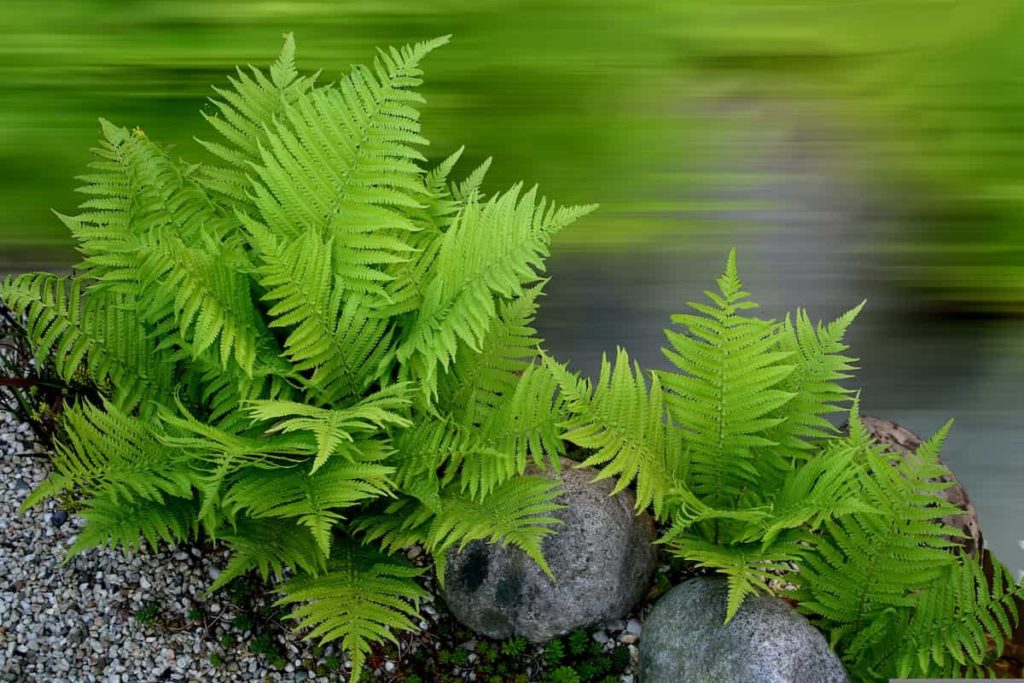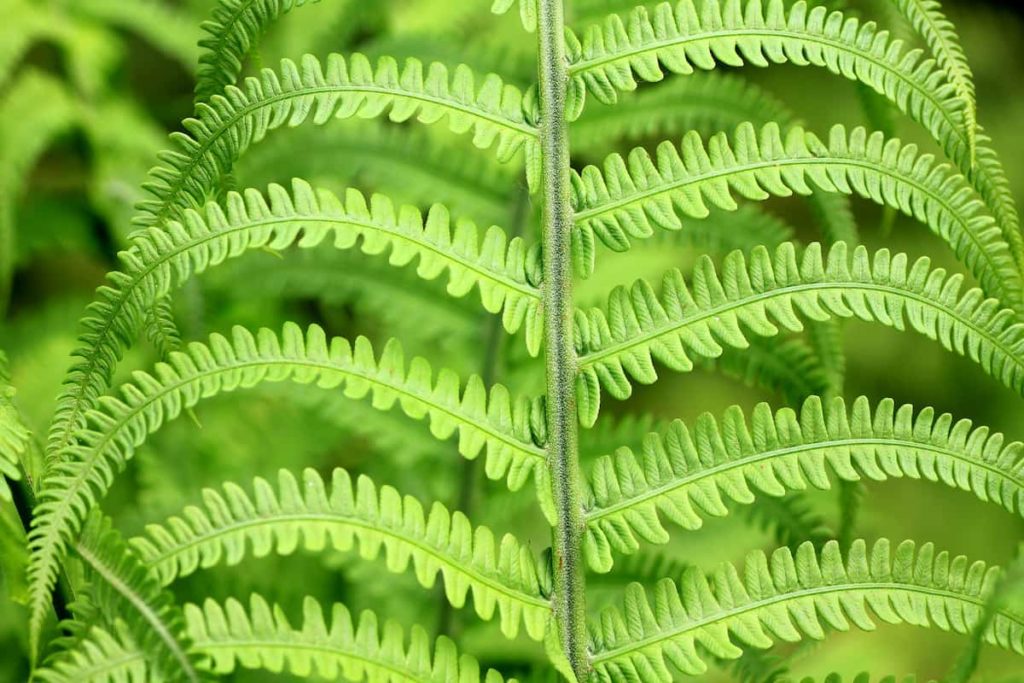Ferns are easiest to grow by division but can also be grown from spores. Growing Ferns from spores, which takes several months up to a year, is an interesting process providing an educational experience. In nature, these beautiful plants reproduce through their spores. Fern spores are small genetic bases for new plants. They are found in a sporangia casing and grouped into bunches called sori under the leaves. The spores look like small dots and can be harvested for Fern spore propagation.

It requires time and skill when propagating Ferns with these minute specks. Ferns are reproduced from spores gathered in clusters called sori, usually under the fronds. Spores can be yellow, green, brown, or black. Sori is sometimes covered with an indium membrane, which will lift when the spores ripen. With some basic knowledge, you can cultivate different Ferns at home.
How to grow Ferns from spores
How long does it take to grow a Fern from a spore?
- With proper care and attention, indoor Ferns can last for many years, even decades. Ferns take considerably less care than other plants. They only need a few things, most of which are very simple and make a lot of sense when considering their natural habitat.
- You should see a translucent green film on a medium surface within four to fourteen days, indicating germination. Most Ferns follow a similar timescale for growth. It usually takes five to ten years for the individual plant to reach maturity, at which point the annual growth cycle will result in the same size and shape of the crown each year.
- Depending on the type of Fern, it may take two to six months after fertilization for the first frond to appear. Gardeners and greenhouse producers do not reproduce indoor Ferns from spores. Most indoor Ferns are separated into several pieces by root division.
Germinating Fern spores
- Ferns produce spores at different times of the year, although many are produced in late summer. It’s fairly easy to see when they’re ready because you should see some brown, yellow, or orange dust around the sorus that’s dusty.
- Use any peat-free compost about 1 to 2 centimeters deep in a small seed tray. Water from the bottom before adding the spores; otherwise, you can wash them off. Cover the tray to help maintain moisture and prevent spores from different Ferns from floating into your tray. Placed in a shady spot somewhere from sunlight and check that they don’t dry out. On top of the compost, you should place Fern leaf.
- After a few days, you could see that the spores had fallen on the compost, and then you should remove the leaves. After a few weeks, a fine green mossy surface emerged. Spores have started growing in the prothallus.
When should you plant Ferns?
- Early spring after the last frost is the best time to plant Ferns, but you can also plant during the summer without any problems. In a temperate climate, you can also plant Ferns throughout the year.
- You can plant Ferns throughout the year, but the ideal time depends on Fern’s hardness and your local climate. The maximum planting time is autumn for frost-hardy Ferns and areas with warm summers. The best planting time is spring for more cold-sensitive Ferns or regions with hard winters. These schedules allow Ferns several months to establish strong root systems before they are exposed to the most stressful local environmental conditions.
Is it hard to grow Ferns from spores?
- Ferns can naturally multiply by two mechanisms. One occurs by producing new plants with underground runners or rhizomes. Another reproduction occurs through the production of spores, which leads to small plants that make both eggs and sperm.
- Easy-to-grow Ferns make an amazing addition to the garden or houseplant collection. They’re also easy to propagate, although making more Ferns takes a little time and patience. The quickest way to grow Ferns is through division, preferably in the spring.
- Tree Fern spores probably seem viable for five years, but the germination rate should be expected to decrease over time. Spores, which are stored dry in the refrigerator, maintain excellent long-term viability.
- Growing Ferns from the spores are surprisingly easy if you get clean, viable spores and sow them in a sterile potting mix enclosed in a plastic bag or a similar container. Fern spores germinate within 2 to 4 weeks.
- Ferns do not produce wood, seeds, or flowers. Instead, reproduce using spores and are pollinated and dispersed by air. Their leaves are known as fronds and may be more than 5 meters long in some species. Ferns are very common everywhere.
In case you missed it: How to Grow Marigold Flowers from Seed to Harvest: A Planting Guide for Beginners

Pruning of Fern plants
- If your Fern is growing outdoors, cutting the plants in the fall after it turns yellow will improve the shape of your plant. You can also decorate indoor Ferns by trimming any dead or brown fronds.
- Ferns grow back after cutting, but new growths will emerge from the rhizome under the soil. This means you should cut any harmful or colorless foliage under the crown at the base of the plant to stimulate new growth.
- If the whole plant is unhealthy, cut it back to the ground so the disease does not spread. By cutting their outdoor evergreen Ferns to the ground each year, the fronds should look green and healthy in every way during the winter.
- When a frond is dieback to the ground, use a pair of scissors or sharp pruners to eliminate dead fronds. Wait to cut a deciduous Fern until all the fronds die back. Then grab all the dead fronds and throw them above the ground. Ferns contain fronds instead of leaves, which only last a year or more. Old fronds start dying back and turn brown while new ones grow. Cutting out the old growth will refresh the plant and leave you with beautiful new fronds.
- If one to three inches of ends are cut off, and the stems are kept in hot water, the fronds will last for one to two weeks.
- Cut them just at the right time, and it doesn’t take any time. To avoid a miss-mash mess, cut off all the fronds on the ground from your Ferns at the end of each winter or early every spring. Once all the fronds are cut, each plant should look like a small, curly fist on the ground.
Best place to plant Ferns
- Usually, Ferns prefer a shady location, but they don’t work well in a darker shade. The dabbled shade provided by tree branches provides the best conditions. Ferns are a natural inhabitant of shaded areas, commonly found where they will receive at least some sun during some part of the day or receive sunlight for most of the day. Most Ferns won’t grow so well in dense shade, they need a little sun to grow at their best.
- They grow best when temperatures do not exceed 24°C during the day and 18°C at night. Temperatures of 35°C or higher can kill the Boston Fern. Outside they should be kept in a sheltered spot where the temperature does not get this hot.
Growing Ferns indoors
- If you provide light and moisture, many Ferns make amazing, low-maintenance houseplants. In general, leathery-foliage Ferns are better suited for normal indoor conditions, while feathery, delicate varieties perform best in greenhouses or terrariums where moisture can easily be kept high.
- To help your Fern thrive in other rooms, try one of these options: Add a room humidifier. Wash your Ferns lightly every few days (avoid daily misting); keep plants away from vents and fans to prevent them from drying out. Add well-moist-mood moss around the base of the plant to help maintain moisture in the dirt. With proper care and attention, indoor Ferns can last for many years, even decades.
In case you missed it: How to Grow Passion Fruit Tree from Seed to Harvest: Check How this Guide Helps Beginners

What month do Ferns grow back?
- Both deciduous and evergreen Ferns experience new growth in the spring. If you cut out old deciduous fronds in late autumn and old evergreen fronds at the end of winter, new fiddleheads, or crosiers, will emerge in the center of the plant in spring or early summer. The only way to know if your Fern is still alive is to set up optimal conditions for recovery and then wait to see if new growths appear. The time required will depend on the time of year, with recovery likely to be most rapid in spring (especially for deciduous Ferns).
Water requirement for growing Ferns
- Ferns must be watered once a week. The amount of water can range from 1-2 gallons for Ferns growing outside to 0.5 gallons or less for Ferns growing indoors in pots. Water a Fern that grows indoors once every ten days, up to 1 gallon of water. In clay soils, Ferns do not need water more than once every 10 to 14 days.
- It is better to create indoor growing conditions that will mimic the outdoor elements that Ferns need. When the soil feels dry, mist the plant as needed to create humid-like conditions. This will help prevent the plant from drying out.
- Mist your Fern as practically as possible, preferably in the morning. You can place the pot on pebbles or clay granules and keep them wet. This increases the moisture around the plant without keeping the roots soggy.
- You’ll need to water more frequently during the hottest part of summer, especially during drought conditions. It takes about 3 to 6 weeks for container plants to set up and plant newer roots.
- The best way to determine how often to water your Fern plant is to check the top half inch of soil for moisture. As a rule of thumb, give the Fern plant some water if it dries. If it’s still damp or moist in the top half inch, there’s no need to water the Fern plant.
How do you make a Fern bushy?
- Keep them away from direct light and a few feet away from windows facing south or west. In addition, they prefer the same living temperatures that we do. Keep the soil moist. Although Ferns don’t like continuous wet soil, never let the plant dry. Ensure the soil is consistently moist, such as wrung out of a sponge.
- In living rooms, stand your pots on trays of damp pebbles or clay granules. Ferns also prefer to mist with tepid, soft water at regular intervals until the room’s humidity is kept high by using a humidifier.
- Instead, trim-side fronds on the base. Also, remove old, colorless fronds near the soil to allow new growth. Remove the ugly stems on the base as well.
- Regular irrigation without excessive watering is essential to keep your Ferns green and full. Ferns also have specific sunlight, and the fertilizer needs to thrive in the container environment.
In case you missed it: How to Grow a Pineapple from Crown/Top to Harvest: Check How this Guide Helps Beginners

Climate requirement for growing Fern
Sun-loving Ferns can take the direct sun for about 4 hours daily and filter out the rest of the day. Ferns prefer bright, indirect light. The perfect scenario is a few hours of the morning sun or slowly filtered lights through the tree canopy. Avoid direct sunlight that can burn the more delicate fronds of Ferns, especially during the warm summer months. Temperatures below -1°C are too cold for most Ferns, and they won’t survive. Some Fern species can survive up to -45°C, but they are rare to grow in arctic or Antarctic climates.
Can potted Ferns survive the winter?
- Fern plants can be left in the ground, as is the case throughout the winter. The fronds will protect the crown of the plant center, where new growth will emerge in the spring. Fern is a hardy perennial plant that will grow back every year. Many gardeners bring pot Ferns indoors to continue growing during the cold weather season.
- Water your Ferns during the winter only when the soil is completely dry. Ferns are more affected by more water than by less water. If your Ferns take on a slightly less color or lose some leaves in the winter, don’t worry. They will return to full glory in the spring. Ferns growing in containers outside can survive winter in very cold climates if you bring them indoors.
Repotting Fern plants
- In general, Ferns need to be repotted every two years. You should check its roots once a year. If the Fern roots start to circle the container, it’s time to repot. If there is still soil around its edge, it should be fine for another year.
- You should select the pot with extra inches of space for further growth. Fern roots are shallow, so short containers are best. Most Ferns grow slowly, but you should start filling your containers as much as possible when they become root bound.
- You should transplant Ferns in early spring while still dormant but as new growth begins to emerge. Potted Ferns can be transplanted or repotted at any time but should be taken care of if performed during their active growth period.
- Avoid areas that will receive direct sunlight. It is essential to choose the perfect size of the container. A container too large or too small can affect the ability of the appropriate soil to maintain the moisture that this plant needs. Select a container that is at least 6 inches deep.
In case you missed it: How to Grow Indian Gooseberry/Amla from Seed to Harvest: Check How this Guide Helps Beginners

Planting potted Ferns on the ground
- It is easy to plant Ferns. You should dig a hole that is more or less the same size as the Fern pot and put the Fern in the hole so that the plant sits just above ground level (about 1 to 2 inches). Make sure the moisture content in the soil is good but consistently damp.
- Ferns almost always perform better outside; the simple reason is that humidity levels are higher there than inside heated homes. The sometimes-humungous Boston Ferns, with fronds up to 3 feet long, usually have more room to spread under the shadow of the porch roof.
- Spring is the best time to plant Ferns in an outdoor container because the plant likes temperatures between 20°C to 26°C. Choose a cool shaded place with moist soil if possible. Avoid areas that will receive direct sunlight.
Fertilizer requirement for growing Fern
- Compared to many other plant plants, Ferns are relatively light feeders. They prefer a balanced fertilizer with micronutrients applied to about 200 ppm nitrogen. Too much nitrogen can cause tip burning on roots and leaves if the plant dries out.
- As a general rule, it’s a good idea to wait four to six months, but if growth stops, you can start earlier. After that, fertilizing indoor Ferns is best done every month during the growing season. Feed the plant only monthly when growth slows down during autumn and winter.
- Most Ferns planted in an open garden don’t require additional feeding, but if soil conditions are particularly poor, you can add a balanced fertilizer, such as blood, fish, and bone meal, in the spring. To enrich the soil, apply a mulch of garden compost or well-rotted manure to the soil surface each year in the spring.
- Ferns don’t need a lot of fertilizer, mainly if you’ve nourished the soil with compost. You should fertilize garden Ferns annually in the spring. The outer container Fern can be fertilized in the spring and mid-summer if the plant looks unhealthy.
Soil requirement for growing Fern
- Ferns require indirect sunlight, moist soil, and humid environments. Ferns prefer potting soils with good drainage and high organic content. To maintain moisture, a potting mixture should contain peat moss or sphagnum, sand or gravel for drainage, and sterilized bagged garden loam or potting soil.
- The best potting mixture for Ferns is a medium-density loam-based compost, which contains coarse materials added for drainage. A general multi-purpose commercial mix is a good base, supplemented with some grit or perlite to help with drainage.
- Ferns need high humidity to thrive. They are a common choice for growing terrariums because they love moisture in the air. When a well-drained media of perlite, bark, and peat moss, the goal is to encourage aeration and moisture retention between each watering.
In case you missed it: How to Grow Apricots from Seed to Harvest: Check How this Guide Helps Beginners

Why is my Fern turning brown and crispy?
- The signs of the Fern turning brown due to underwatering. If the soil dries between watering, the Fern leaves turn brown and crispy at the tips due to the lack of moisture around the roots. Smaller pots dry more quickly.
- You can see brown signs on the garden Ferns if the soil gets too dry. When it feels dry to touch, the water slowly and deeply. Stop giving water when the water runs off instead of sinking into the soil. If the soil becomes compact, the water will run out quickly.
- If the air is too dry, it will become crispy. If your Fern looks brown everywhere, try misting it further and see if it improves over the next few weeks. Even better, place it in the bathroom so it can enjoy steam from your shower. Most Ferns are hard plants, so they revive in a few weeks after you fix problematic conditions. The good news is that if the Fern is dead, common in cold temperatures during the winter, it will grow back in the spring once the temperature goes up.
Conclusion
Fern fronds’ unique shape and structure create striking focal points in the garden that contrast nicely with other plants. The conditions under which Ferns will thrive are also quite variable, but Fern propagation is possible. Even if you’ve successfully run the course from rouge spores to prothalli to mature sporophytes, you may have another obstacle to compete with spores that have produced plants you didn’t intend to grow. Some spores produce plants that don’t produce identically to their parents.
- How to Grow Tomatoes Organically at Home: A Comprehensive Guide
- Organic Gardening on a Budget: Low-Cost Methods and Materials
- Gongura Seed Germination and Planting Methods
- Cabbage Seed Germination and Selection
- Broccoli Seed Germination and Selection
- Asparagus Seed Germination and Variety Selection
- Seasonal Flower Gardening: Best Practices for Spring, Summer, Fall, and Winter
- How to Grow Hibiscus from Flower
- Plantation Ideas for Home Decoration: A Beginners Guide
- Flower Garden Designs and Layouts for Beginners
- Planting and Spacing Techniques in Papaya: A Beginner’s Guide
- Growing Gold: Essential Techniques for Planting Pineapples
- How to Make Kalanchoe Plant Bushy: Home Remedies and Solutions
- 11 Reasons Why Your Gardenia is Not Blooming: Home Remedies and Solutions
- Eco Elegance: The Guide to Designing a Drought-Tolerant Landscape
- Gardening on a Slope: Strategies for Hillside Landscaping
- Nourish and Flourish: Top Organic Mulches for Thriving House Plants
- Everything You Want to Know about Indian Mogra Flower: Discover Uses and Growing
- Green Thumb Success: Expert Tips for Cultivating Greenhouse Pumpkins All Year Round
- Maximize Growth & Flavor: The Ultimate Guide to Companion Planting in Herb Gardens
- How to Control Rhododendron Problems Naturally: Home Remedies and Organic Ways to Fix Them
- Natural Magic: The Remarkable Benefits of Cinnamon for Plants
- Best Steps to Revive Dying Tulip with Natural and Organic Treatment
- 10 Reasons Why Your Angel Trumpet is Not Blooming: Remedies and Treatment
- How to Fix Periwinkle Leaf and Flower-Related Problems: Natural Remedies and Solutions
- How to Fix Zinnias Leaf and Flower Problems: Discover Natural and Home Remedies
- Organic Steps to Induce Lemon Tree Flowers: A Comprehensive Guide
- Bloom Booster: Crafting the Perfect Homemade Bougainvillea Fertilizer
- Optimizing Growth: A Guide to Applying NPK Fertilizer for Potted Plants
- 10 Best Homemade Fertilizers for Rubber Plant: DIY Recipes and Application Method
- How to Boost Female Pumpkin Flowers: Effective Steps for More Flowers and High Yields
- Transform Your Indoor Garden: Top Benefits of Pink Salt for Houseplants
- 10 Best Homemade Fertilizers for Peacock Plants (Calathea): Easy DIY Guide
- Unlock Blooms: 9 Reasons Why Your Potted Chrysanthemum is Not Blooming
- 8 Reasons Why Your Potted Hibiscus is Not Blooming: Fix it with Simple Solutions
- Unlock Blooms: 9 Key Reasons Your Potted Frangipani Won’t Flower